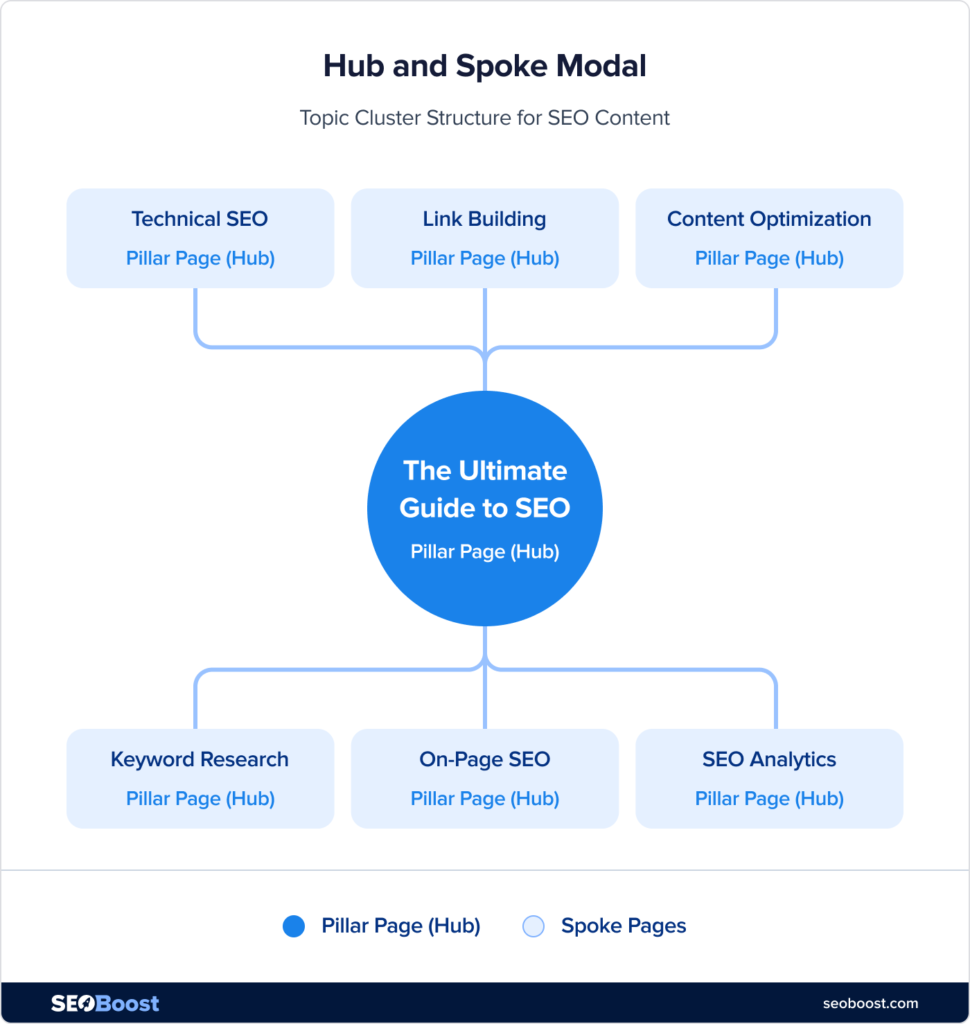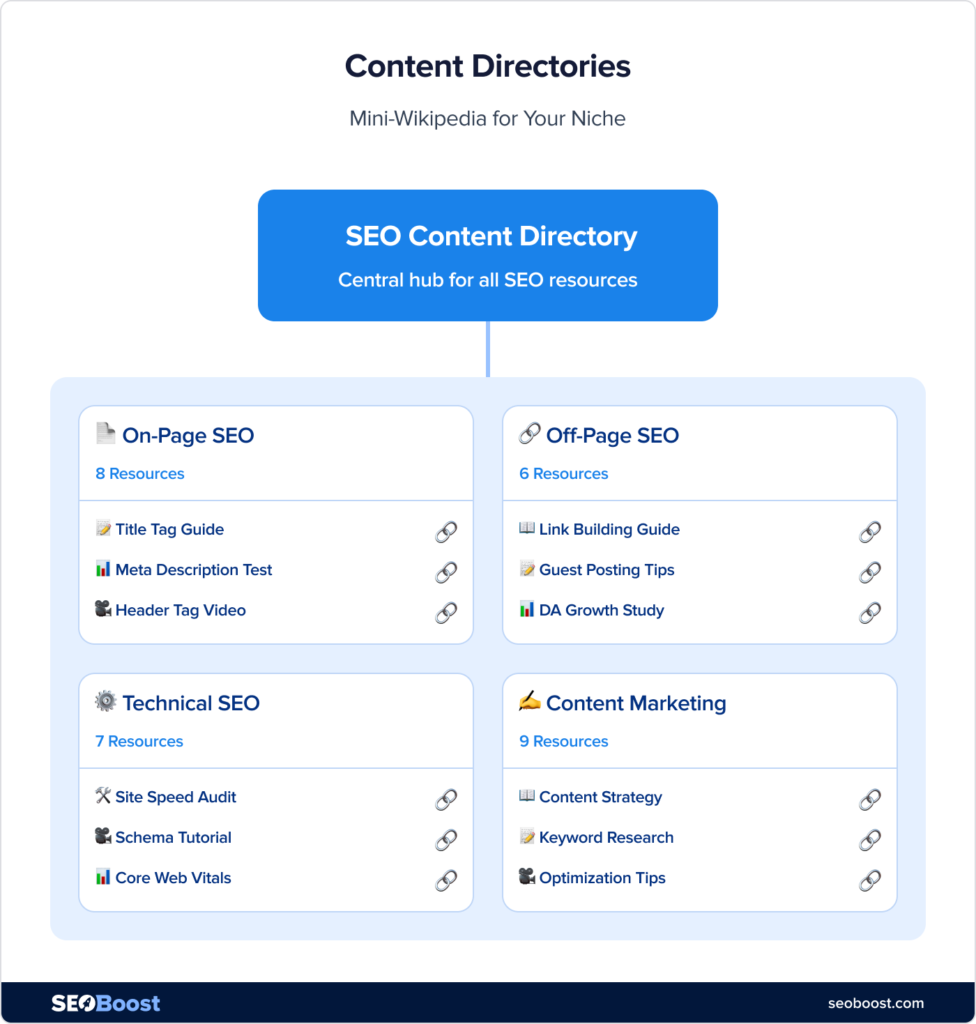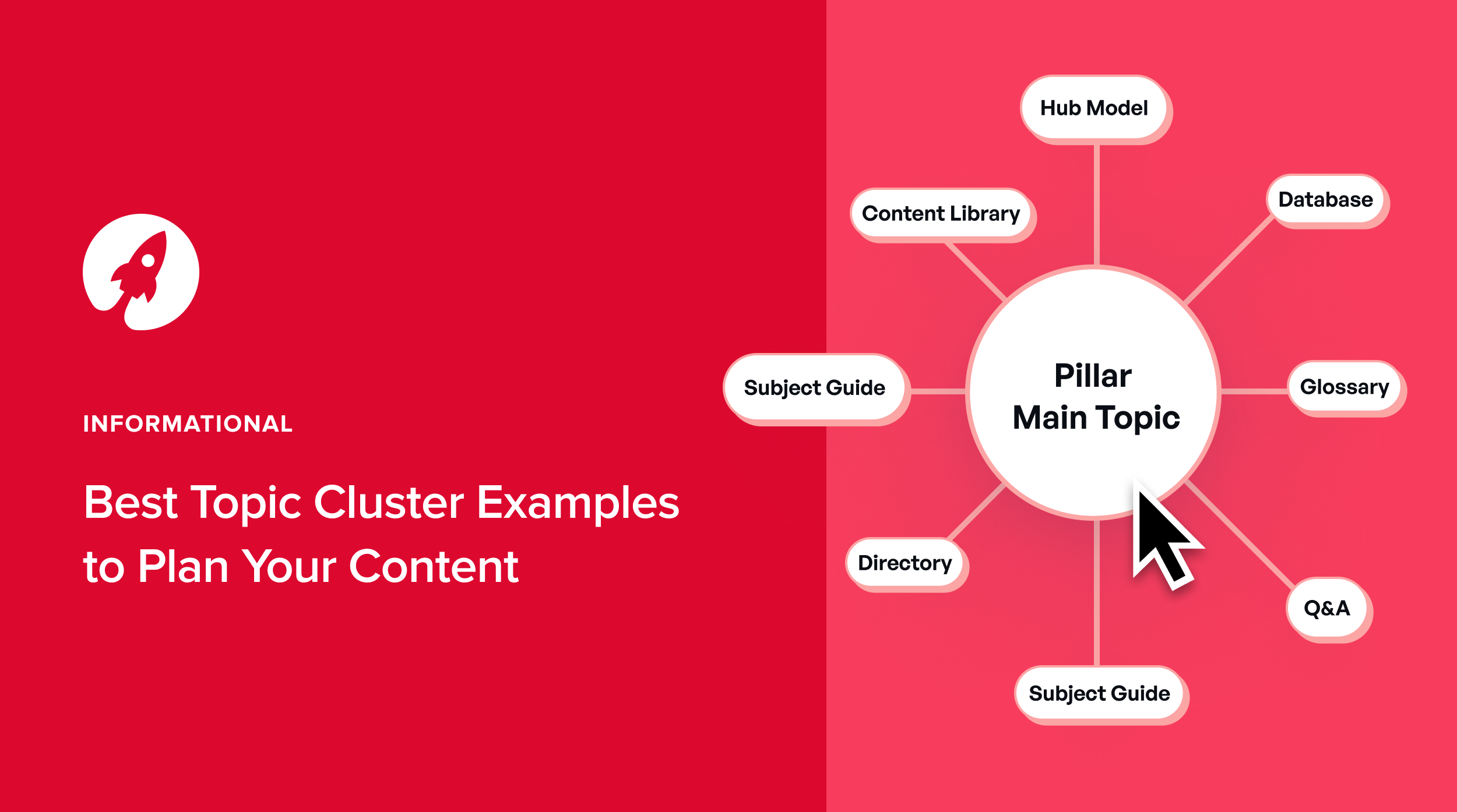If you’re like me and constantly looking for ways to create content that’s organized, effective, and Google-approved, you need to start creating topic clusters. To do that, it can be really helpful to look at different topic cluster examples.
Creating content around topic clusters is like giving your website a clear roadmap that both users and search engines can easily navigate. Instead of randomly publishing content, you’re building interconnected pieces that all point back to a central theme, making your content much more valuable and relevant.
But how exactly do you structure these clusters? And what are some real-life examples you can follow? Don’t worry, I’ve got you covered.
In this post, I’ll break down 8 effective topic cluster examples that can seriously boost your SEO strategy.
Let’s start with a definition.
What Are Topic Clusters?
Topic clusters are a content strategy that focuses on organizing content around a central topic, which is also known as the “pillar” and supporting subtopics, often referred to as the “spokes”.
Each spoke links back to the pillar page, reinforcing its authority and relevance in the eyes of search engines.
Think of topic clusters as creating a content web. The more connected your content is, the easier it is for users (and search engines) to find what they’re looking for.
Benefits of Topic Clusters
So, why should you care about topic clusters? Here’s why:
- Improved SEO: Google’s algorithms love well-organized content structures.
- Enhanced User Experience: Topic clusters help visitors easily navigate your content.
- Content Authority: Building clusters around specific topics establishes you as an expert in your niche.
- Boosted Internal Linking: Interconnecting content pieces improves engagement and retention.
8 Topic Cluster Examples and How to Use Them
Now, that you have a better understanding of topic clusters, let’s get to the best part: how do you use them in your content.
1. Hub and Spoke Model
This is probably the most common and straightforward way to structure topic clusters. You have one pillar page that acts as the main hub, and various spoke pages linked to it that cover related subtopics.

Example:
- Pillar Page: “The Ultimate Guide to SEO Basics”
- Spoke Pages: Keyword Research, On-Page SEO, Technical SEO, Link Building, Content Optimization, etc.
To create this model, start with a broad, authoritative guide that covers the overall topic (SEO basics). Then, break down that topic into smaller, related pieces (keyword research, on-page SEO, technical SEO, etc.).
Once all the pieces are live, make sure that you link all spoke pages back to the main hub for improved SEO strategy.
Pro Tip: Use keyword research tools like LowFruits to identify all related keywords to include in your cluster. It has a Keyword Clustering Tool that groups semantically related keywords automatically.
2. Content Libraries
Content libraries are perfect if you have a large amount of content within a specific category. Instead of just dumping all your SEO content into one section, you organize it by subtopics for easier navigation.

Example:
- Pillar Page: “Digital Marketing Resources”
- Categories: SEO, Content Marketing, Social Media, Email Marketing, PPC
- Resources: Blog posts, guides, checklists, case studies, videos
Create an index page that categorizes all your resources. Then, link to individual pieces of content under each category.
Make sure your internal linking is strong to enhance topical authority.
3. Subject Guides
Subject guides work best when you want to cover every aspect of a single topic. They are often structured as long-form content divided into multiple chapters or sections.
Example:
- Pillar Page: “The Complete Guide to Blogging”
- Sections: Content Creation, SEO for Blogs, Monetization Strategies, Promoting Your Blog, Analytics & Optimization
To create subject guides, start by breaking your guide into well-defined chapters. Include internal links that guide readers from one section to the next.
You can also use SEOBoost’s Content Briefs to structure each chapter and optimize it for relevant keywords from the get-go.
This can especially be useful if you have a team of writers to manage. You can leave them notes to follow, making the content creation process easier.
4. Content Directories
A content directory serves as a central hub where you categorize and link to various related pieces of content. Think of it like a mini-Wikipedia for your niche.

Example:
- Pillar Page: “SEO Content Directory”
- Categories: On-Page SEO, Off-Page SEO, Technical SEO, Content Marketing
- Links: Blog posts, case studies, videos, podcasts, etc.
Create a directory-style page that lists and links all related content. Keep it updated with new resources. You can also add new content as you go along.
In my opinion, this approach is excellent for boosting your site’s domain authority on a particular subject.
5. Databases
Databases are more advanced versions of content directories, providing a searchable and filterable collection of resources. They work especially well for niches where updated information is crucial.
Example:
- Pillar Page: “SEO Tools Database”
- Filters: Free Tools, Paid Tools, Keyword Research, Content Optimization, Technical SEO
To create databases, start with a dynamic and filterable resource library. Update the database regularly to stay relevant.
You can also promote your database as a valuable resource to earn backlinks.
6. Resource Hubs
If there’s one thing I’ve noticed about content marketing, it’s that people love neatly organized resources.
Creating a Resource Hub is like building a one-stop shop where your audience can find everything they need on a specific topic.
And the best part? It’s a surefire way to attract backlinks and social shares.
Example:
- Pillar Page: “SEO Learning Hub”
- Categories: Beginner’s Guides, Advanced SEO Techniques, Free Tools, Case Studies, Tutorials
- Content Types: Articles, videos, infographics, downloadable templates
Create a well-designed central page that categorizes all resources by topic. Include meta descriptions and links to each piece of content.
You should also update the hub regularly with new content to keep it fresh and relevant.
If you want complete control over your resource hubs, use SEOBoost’s Content Management feature to keep track of all your resources and ensure nothing falls through the cracks.
With this feature, you can create as many content campaigns and projects as you want. You can also get a calendar view of all the projects, making it easy to scan everything in a bird’s-eye view.
Pro Tip: Make your resource hub interactive by including multimedia content and providing filtering options for easier navigation.
7. Glossaries
Creating a glossary is a fantastic way to boost your topical authority, especially if you’re in a niche that uses a lot of jargon. I’ve found this approach particularly effective for niches like SEO, marketing, and tech.
Example:
- Pillar Page: “SEO Terms Glossary”
- Terms: Keyword Cannibalization, SERP Features, Anchor Text, Backlinks, Domain Authority
- Description: Each term is clearly defined with links to related articles for deeper understanding.
Create a list of all the important terms and concepts related to your topic. Add concise explanations with links to relevant articles or guides.
Continuously update your glossary as your industry evolves.
Use SEOBoost’s Content Optimization feature to ensure your glossary is structured and formatted in a way that maximizes search visibility.
What I love the most about using this feature is that it highlights the important on-page SEO elements that your content should have.
Using this, you can optimize even your glossaries to rank on search engines.
8. Q&A Sections
If you’re looking to build topical authority and capture search intent, creating a Q&A section is a no-brainer. Google loves content that directly answers user questions, and so does your audience.
Example:
- Pillar Page: “SEO FAQs”
- Questions Covered: What is SEO? How does keyword research work? What are backlinks? How to improve on-page SEO?
- Answers: Short, precise explanations with links to relevant articles for more information
Compile a list of commonly asked questions related to your topic.
Provide straightforward answers and link to more detailed content where necessary. Regularly update your Q&A section as new questions arise. You can also check for relevant questions from Google’s People Also Ask section. This will help you answer the most relevant queries that users are searching for.
Combining Q&A sections with SEOBoost’s Topic Reports helps identify what questions people are searching for, so you can create highly relevant content.
One of the 7 reports in this feature is just about the relevant questions to answer. You can take a look at these and include them in your content.
FAQs About Topic Cluster Examples
What are topic clusters?
Topic clusters are a content strategy where related pieces of content are grouped around a central theme (pillar page) and linked together. This structure enhances your site’s authority on a specific topic and improves search engine visibility.
What is an example of a content cluster?
A content cluster example is a pillar page. These include further clusters. Some examples for those topic cluster examples would be subtopics including “Keyword Research,” “On-Page SEO,” “Content Optimization,” and “Technical SEO.”
What is a cluster subject?
A cluster subject is the central theme or broad topic around which you build your content cluster. For example, if your cluster subject is “SEO,” then your subtopics could include keyword research, backlinks, content optimization, and so on.
Final Thoughts on Topic Cluster Examples
Building topic clusters isn’t just about improving your SEO rankings. It’s about creating a cohesive content strategy that better serves your audience.
When you group related topics and interlink them effectively, you’re making it easier for users to find valuable information. And the more value you provide, the more Google rewards you.
By using tools like SEOBoost, you can structure your topic clusters more efficiently and ensure each piece of content is optimized for search.
The result? Higher rankings, better engagement, and more traffic.
Now that you’ve got 8 powerful topic cluster examples at your disposal, it’s time to put them to work and supercharge your SEO strategy.




